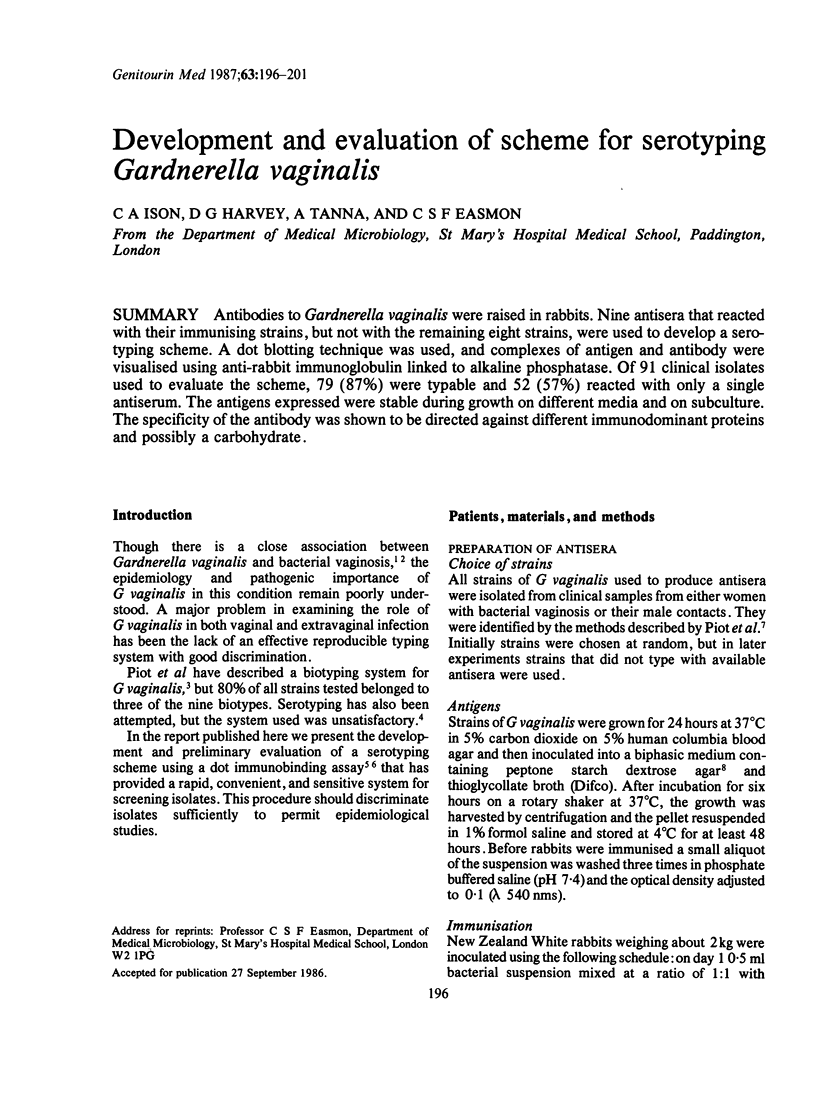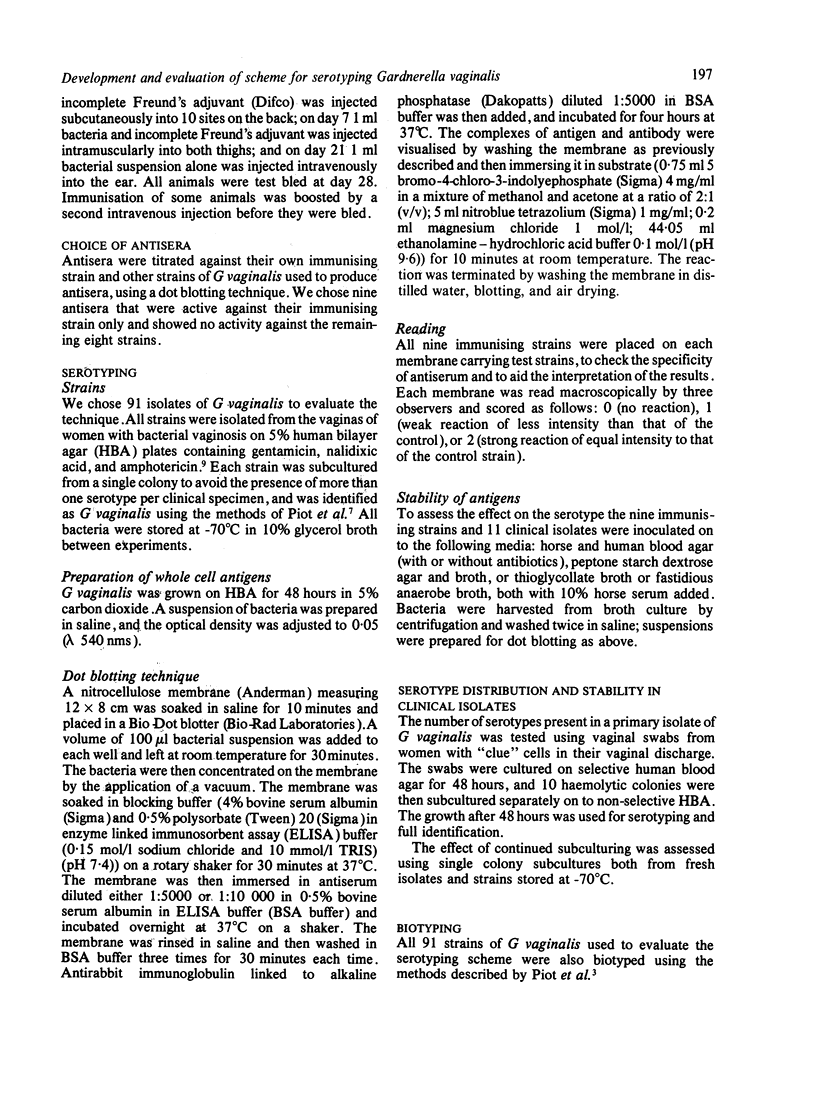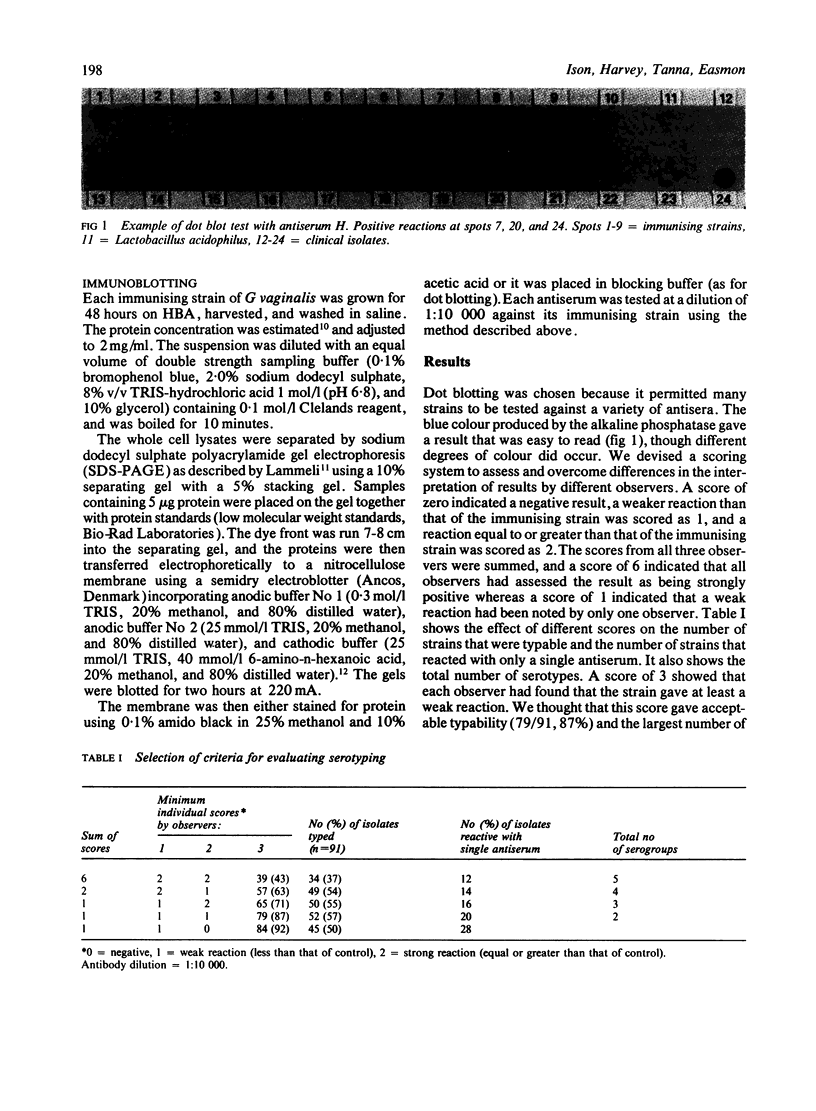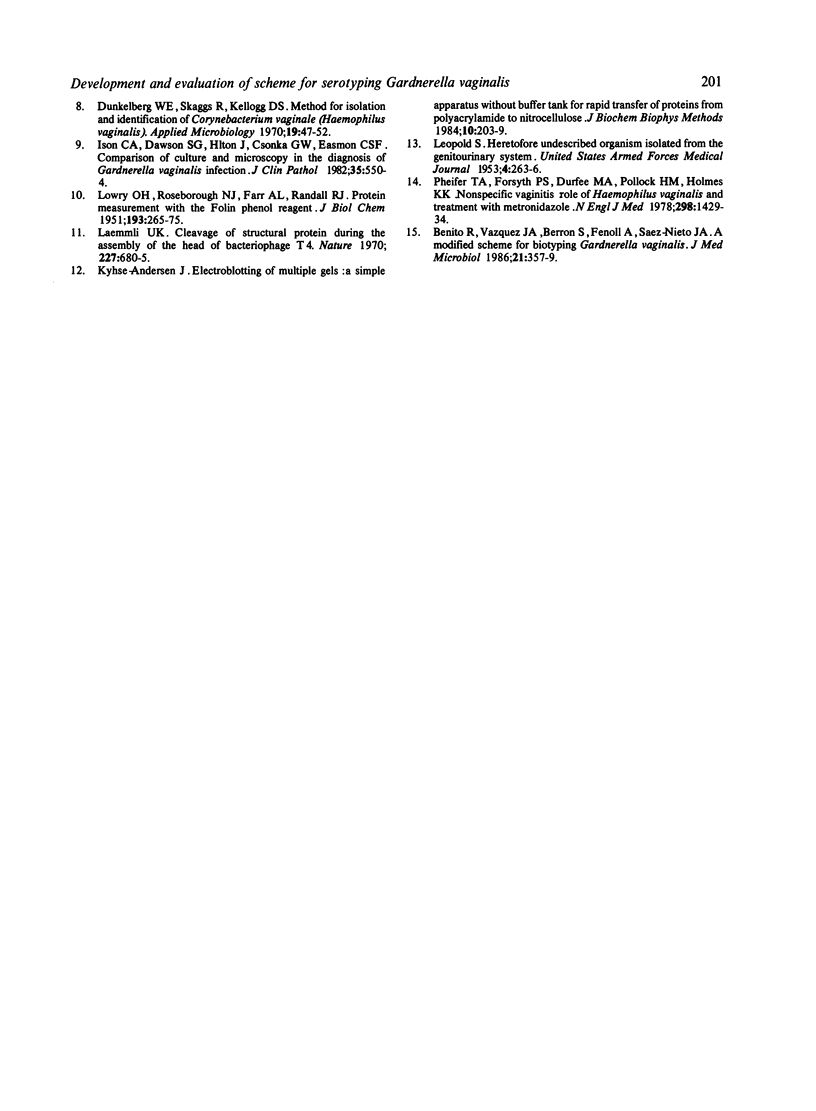Abstract
Antibodies to Gardnerella vaginalis were raised in rabbits. Nine antisera that reacted with their immunising strains, but not with the remaining eight strains, were used to develop a serotyping scheme. A dot blotting technique was used, and complexes of antigen and antibody were visualised using anti-rabbit immunoglobulin linked to alkaline phosphatase. Of 91 clinical isolates used to evaluate the scheme, 79 (87%) were typable and 52 (57%) reacted with only a single antiserum. The antigens expressed were stable during growth on different media and on subculture. The specificity of the antibody was shown to be directed against different immunodominant proteins and possibly a carbohydrate.
Full text
PDF





Images in this article
Selected References
These references are in PubMed. This may not be the complete list of references from this article.
- Amsel R., Totten P. A., Spiegel C. A., Chen K. C., Eschenbach D., Holmes K. K. Nonspecific vaginitis. Diagnostic criteria and microbial and epidemiologic associations. Am J Med. 1983 Jan;74(1):14–22. doi: 10.1016/0002-9343(83)91112-9. [DOI] [PubMed] [Google Scholar]
- Benito R., Vazquez J. A., Berron S., Fenoll A., Saez-Neito J. A. A modified scheme for biotyping Gardnerella vaginalis. J Med Microbiol. 1986 Jun;21(4):357–359. doi: 10.1099/00222615-21-4-357. [DOI] [PubMed] [Google Scholar]
- Dunkelberg W. E., Jr, Skaggs R., Kellogg D. S., Jr Method for isolation and identification of Corynebacterium vaginale (Haemophilus vaginalis). Appl Microbiol. 1970 Jan;19(1):47–52. doi: 10.1128/am.19.1.47-52.1970. [DOI] [PMC free article] [PubMed] [Google Scholar]
- EDMUNDS P. N. The biochemical, serological and haemagglutinating reactions of "Haemophilus vaginalis". J Pathol Bacteriol. 1962 Apr;83:411–422. doi: 10.1002/path.1700830211. [DOI] [PubMed] [Google Scholar]
- GARDNER H. L., DUKES C. D. Haemophilus vaginalis vaginitis: a newly defined specific infection previously classified non-specific vaginitis. Am J Obstet Gynecol. 1955 May;69(5):962–976. [PubMed] [Google Scholar]
- Hawkes R., Niday E., Gordon J. A dot-immunobinding assay for monoclonal and other antibodies. Anal Biochem. 1982 Jan 1;119(1):142–147. doi: 10.1016/0003-2697(82)90677-7. [DOI] [PubMed] [Google Scholar]
- Herbrink P., Van Bussel F. J., Warnaar S. O. The antigen spot test (AST): a highly sensitive assay for the detection of antibodies. J Immunol Methods. 1982;48(3):293–298. doi: 10.1016/0022-1759(82)90330-1. [DOI] [PubMed] [Google Scholar]
- Ison C. A., Dawson S. G., Hilton J., Csonka G. W., Easmon C. S. Comparison of culture and microscopy in the diagnosis of Gardnerella vaginalis infection. J Clin Pathol. 1982 May;35(5):550–554. doi: 10.1136/jcp.35.5.550. [DOI] [PMC free article] [PubMed] [Google Scholar]
- Paton J. C., Lawrence A. J., Manson J. I. Quantitation of Clostridium botulinum organisms and toxin in the feces of an infant with botulism. J Clin Microbiol. 1982 Jan;15(1):1–4. doi: 10.1128/jcm.15.1.1-4.1982. [DOI] [PMC free article] [PubMed] [Google Scholar]
- Pheifer T. A., Forsyth P. S., Durfee M. A., Pollock H. M., Holmes K. K. Nonspecific vaginitis: role of Haemophilus vaginalis and treatment with metronidazole. N Engl J Med. 1978 Jun 29;298(26):1429–1434. doi: 10.1056/NEJM197806292982601. [DOI] [PubMed] [Google Scholar]
- Piot P., Van Dyck E., Peeters M., Hale J., Totten P. A., Holmes K. K. Biotypes of Gardnerella vaginalis. J Clin Microbiol. 1984 Oct;20(4):677–679. doi: 10.1128/jcm.20.4.677-679.1984. [DOI] [PMC free article] [PubMed] [Google Scholar]




